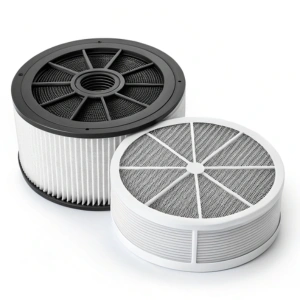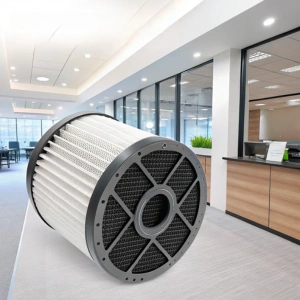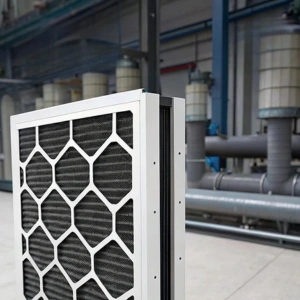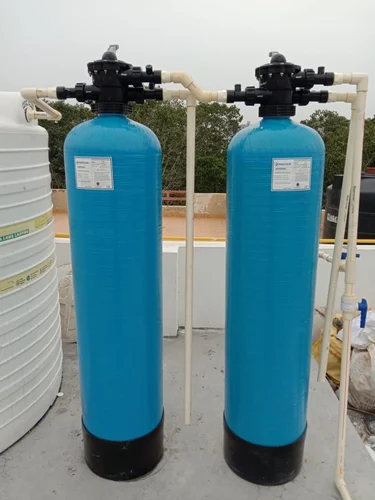carbon-filter-in-air-purifier
Poor indoor air quality can trigger allergies, headaches, and long-term respiratory issues—especially in rapidly growing cities like Chennai. Greenly designs and manufactures premium activated-carbon filters for air purifiers, removing up to 99 % of harmful gases, persistent odors, volatile organic compounds (VOCs), and fine particles. Certified to BIS and ISO standards, our filters are built from sustainable coconut-shell carbon and engineered for maximum adsorption, low pressure drop, and long service life.

Why choose activated-carbon filters?
Eliminate Harmful Gases – Capture carbon monoxide, nitrogen dioxide, sulfur dioxide, and other toxic gases that standard HEPA filters miss.
Neutralize Persistent Odors – Remove cooking smells, pet dander odors, tobacco smoke, and chemical fumes within minutes.
Improve Overall Air Quality – Trap allergens and micro-particles down to 0.3 µm, reducing asthma triggers and enhancing comfort
How activated carbon works
Adsorption (not absorption) is the key. Each gram of Greenly carbon hosts millions of micropores, giving it a colossal internal surface area—over 1 000 m² per gram—where gas molecules bond to the carbon walls. A single filter runs air through three layers:
Pre-screen removes dust and large debris, protecting the carbon.
Activated-carbon bed adsorbs gases, odors, and VOCs.
Optional post-filter catches any loose carbon fines and polishes the output air.
Limescale buildup on taps, faucets, and showerheads
Result: cleaner, fresher air without chemical additives.
Greenly product features
Advanced Filtration Technology – High-iodine-value carbon for superior adsorption; engineered flow channels minimize pressure loss.
Eco-Friendly Materials – Coconut-shell carbon is renewable, low-ash, and landfill-safe after use.
Durable, Customizable Designs – Cartridge, granular, and block configurations fit most residential purifiers and industrial HVAC systems; lifespans up to 12 months at 8 h/day.
Low Total Cost of Ownership – Long media life plus optional pressure-drop sensors that signal when replacement is needed—no guesswork.
Applications

Residential Homes
Protect children and seniors from VOCs emitted by paints, cleaning products, and furniture.
Quiet operation keeps bedrooms and living spaces peaceful.

Commercial Buildings
Offices, restaurants, and shopping malls rely on Greenly filters to neutralize food smells, printing fumes, and high-occupancy CO₂ spikes.
Case study: A Chennai IT campus recorded an 87 % VOC reduction within two weeks of installation.

Industrial Facilities
Factories, paint booths, and warehouses use our high-capacity blocks to keep employee exposure below OSHA limits.
Filters withstand high airflow and temperature fluctuations common in production lines.
Benefits at a glance
Up to 99 % removal efficiency for gases and odors.
Long lifespan—replace every 9–12 months or when pressure drop rises by 30 %.
Monitor water pressure and flow rates after installation
Consider a water softener for home bathroom systems for larger scale needs
Our Range of Products
Frequently Asked Questions
1. What is the primary purpose of a carbon filter in an air purifier?
Activated-carbon filters target gaseous pollutants—VOCs, formaldehyde, ammonia, and cigarette smoke—that pass straight through particle-only filters. By adsorbing these molecules, they protect occupants from headaches, nausea, and long-term respiratory harm.
2. How effective are Greenly carbon filters?
Lab tests show up to 99 % removal efficiency for common indoor pollutants under controlled airflow. Real-world performance varies with contaminant load, humidity, and airflow speed, but users typically notice odor reduction within the first hour.
3. How often should I replace the carbon filter?
For homes: every 9–12 months of normal use (8 hours/day). For commercial or industrial sites: monitor pressure-drop sensors or odor breakthrough; replacement may be needed every 4–6 months in high-load environments.
4. Can a carbon filter remove mold spores or bacteria?
No. Carbon targets gases and odors. Pair it with a true-HEPA filter or UV-C lamp to capture or neutralize biological contaminants like mold, bacteria, and viruses.
5. Will carbon filters improve air quality in industrial areas?
Absolutely. Activated carbon is widely used in paint shops, chemical warehouses, and manufacturing plants to maintain occupational-safety thresholds for solvents, acid gases, and other hazardous fumes. Our industrial blocks are rated for high airflow and continuous duty.

